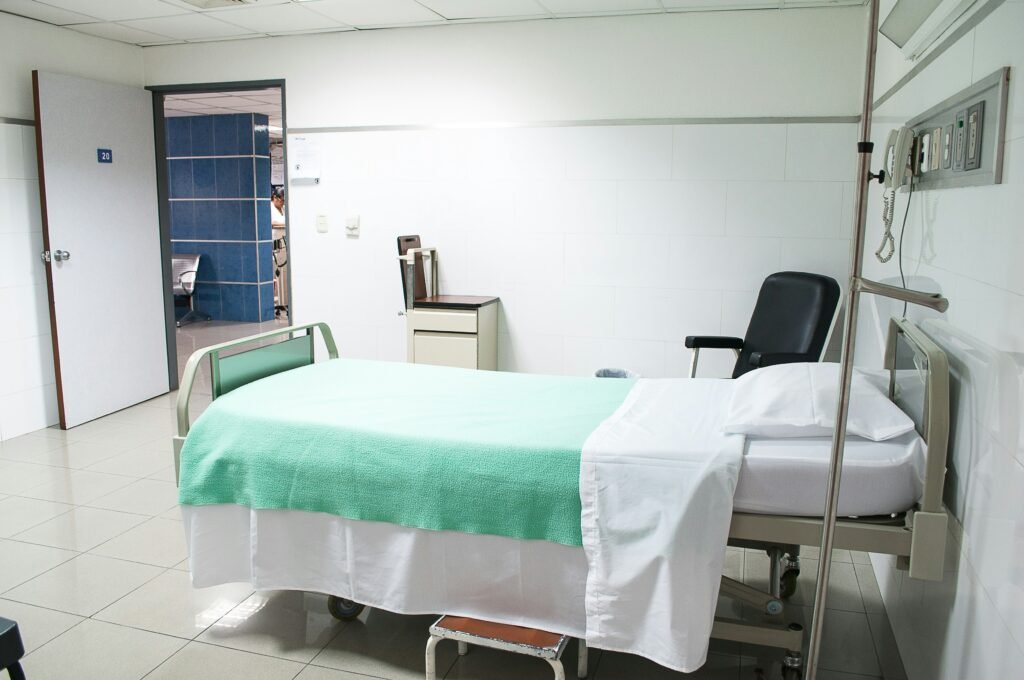Pugs are adorable little dogs with a unique set of health concerns that every owner should be aware of. From their cute wrinkled faces to their curly tails, these lovable creatures can be prone to certain health issues. In this article, we will take a closer look at some of the common health concerns in Pugs, providing you with valuable insight and tips to keep your furry friend healthy and happy. So, whether you are already a proud Pug parent or considering adding one to your family, read on to gain a better understanding of the potential health issues and how to address them.

This image is property of images.unsplash.com.
Respiratory issues
Brachycephalic syndrome
Brachycephalic syndrome is a common respiratory issue found in pugs, characterized by a shortened muzzle and flattened face. This adorable feature that we all love about pugs actually puts them at a higher risk for breathing difficulties. Due to their unique anatomy, pugs may experience narrowed airways, making it harder for them to breathe properly. This can result in symptoms such as snoring, wheezing, and even trouble exercising or sleeping. It’s important to monitor your pug closely for signs of brachycephalic syndrome and seek veterinary care if you notice any issues.
Stenotic nares
Another respiratory concern often seen in pugs is stenotic nares, which refers to the narrowing of the nostrils. Pugs have naturally narrower nasal passages compared to other breeds, making them more prone to developing stenotic nares. This condition can lead to labored breathing, snorting, and difficulty in regulating body temperature. Keep an eye out for any signs of nasal obstruction in your pug and consult your veterinarian if you suspect they may be affected by stenotic nares.
Elongated soft palate
Pugs also have a higher incidence of elongated soft palate, a condition where the soft tissue at the back of the throat is longer than usual. This can lead to breathing difficulties and loud snoring, especially during sleep or exercise. In severe cases, an elongated soft palate can cause more serious complications, such as breathing obstruction or aspiration pneumonia. Regular veterinary check-ups are crucial to monitor your pug’s soft palate and ensure early intervention if necessary.
Eye problems
Corneal ulcers
Corneal ulcers can occur in pugs due to their prominent eyes, which are more exposed and vulnerable to injuries or irritants. These ulcers are essentially open sores on the surface of the cornea and can be quite painful for your pug. Common signs of corneal ulcers include redness, discharge, squinting, and increased sensitivity to light. Seeking prompt veterinary care is essential to prevent further damage and infection.
Progressive retinal atrophy
Progressive retinal atrophy (PRA) is an inherited eye disease that affects the photoreceptor cells in the retina. Over time, PRA leads to progressive vision loss and can eventually result in complete blindness. This condition usually develops slowly, and the first signs may include night blindness or difficulty seeing in low light conditions. Regular eye examinations by a veterinary ophthalmologist can help detect PRA early on, allowing for appropriate management and support for your pug’s visual needs.
Dry eye syndrome
Dry eye syndrome, also known as keratoconjunctivitis sicca, occurs when there is insufficient tear production to keep the eyes properly lubricated. Pugs are more prone to developing this condition, which can lead to discomfort, redness, and recurrent eye infections. Regular eye examinations can help diagnose dry eye syndrome early and enable appropriate management, such as artificial tear supplementation or medication to stimulate tear production.

This image is property of images.unsplash.com.
Dental problems
Malocclusion
Malocclusion refers to dental misalignment or abnormalities in the positioning of the teeth and jaw. Pugs may be prone to dental issues such as an underbite or overshot jaw, where the lower or upper jaw protrudes beyond the opposite jaw. These dental problems can result in difficulty eating, increased plaque and tartar buildup, and even oral infections. Regular dental check-ups and professional cleanings are necessary to maintain your pug’s oral health and prevent potential complications.
Periodontal disease
Periodontal disease is a common dental concern in pugs, as it is in many small breeds. Plaque and tartar buildup can lead to gum inflammation, infection, and ultimately, progressive periodontal disease. This can result in tooth loss, pain, and even systemic health issues. Regular brushing of your pug’s teeth, routine dental cleanings, and providing appropriate chew toys or dental treats can help prevent and manage periodontal disease.
Plaque and tartar build-up
Pugs are notorious for their dental problems, and plaque and tartar buildup are common issues. The shape and placement of their teeth may contribute to the accumulation of plaque, which can harden into tartar if not regularly removed. This build-up not only causes bad breath but can also lead to gum disease and dental decay. Daily tooth brushing using dog-friendly toothpaste and regular dental cleanings are essential to keep your pug’s teeth clean and healthy.
Skin conditions
Allergies
Pugs may be prone to various allergies, including environmental allergies (such as pollen, dust mites, or certain fabrics) and food allergies. Allergic reactions can manifest in different ways, including itchiness, redness, hair loss, rashes, and recurrent ear infections. If you notice any signs of allergies in your pug, it’s important to work with your veterinarian to identify the triggers and develop a management plan, which may include allergen avoidance, medications, or dietary changes.
Pyoderma
Pyoderma is a bacterial skin infection that can affect pugs due to their skin folds and wrinkles. Moisture, heat, and the accumulation of debris in these areas create an ideal environment for bacteria to thrive. Pyoderma can cause redness, itching, hair loss, and the formation of pus-filled bumps or sores. Regular cleaning and drying of your pug’s skin folds, as well as proper grooming practices, can help prevent pyoderma and maintain skin health.
Fold dermatitis
Fold dermatitis, or intertrigo, is another common skin condition seen in pugs. It occurs when the skin folds and wrinkles trap moisture, leading to inflammation, irritation, and bacterial or fungal infections. Regular cleaning and drying of the skin folds are crucial to prevent fold dermatitis. Using pet-safe wipes or a mild antiseptic solution can help keep these areas clean and reduce the risk of infection.

This image is property of images.unsplash.com.
Joint issues
Hip dysplasia
Hip dysplasia is a common joint problem in many dog breeds, including pugs. It occurs when the hip joint is improperly formed, leading to abnormal wear and tear and eventually causing pain and mobility issues. Pugs with hip dysplasia may show signs such as difficulty walking, stiffness, or a reluctance to climb stairs or jump. Early detection through regular veterinary check-ups and appropriate management, such as weight management, exercise moderation, and medication if necessary, can help improve your pug’s quality of life.
Patellar luxation
Patellar luxation refers to the dislocation of the kneecap, which can occur in pugs due to their shallow knee joint structure. This condition can cause lameness, pain, and gait abnormalities. In mild cases, rest and monitoring may be sufficient, while severe cases may require surgical intervention. Consult your veterinarian if you suspect your pug may be suffering from patellar luxation, as early intervention can help prevent further complications.
Legg-Calve-Perthes disease
Legg-Calve-Perthes disease is a degenerative hip disorder that primarily affects small breeds like pugs. It involves the deterioration of the head of the femur bone, leading to pain, lameness, and decreased mobility. Prompt veterinary evaluation and appropriate treatment, which may include surgery to remove the diseased bone, can help manage and alleviate the symptoms of Legg-Calve-Perthes disease in your pug.
Reproductive problems
Birthing difficulties
Due to their compact body shape, pugs often face challenges during the birthing process. Their large heads and narrow pelvis may result in difficulties during labor and delivery, risking the health of both the mother and the puppies. It is crucial to work closely with a veterinarian experienced in pug breeding to ensure a safe and successful birth. In some cases, cesarean sections may be necessary to reduce the risks associated with birthing difficulties.
Testicular problems
Testicular problems, particularly cryptorchidism (undescended testicles), can occur in pugs. This condition requires surgical intervention to remove the retained testicle(s). Testicular tumors are also more prevalent in intact male pugs, highlighting the importance of neutering to reduce the risk of reproductive problems and certain cancers.
False pregnancies
False pregnancies can occur in female pugs, presenting as behavioral and physical changes resembling an actual pregnancy. These include nesting behavior, mammary gland enlargement, and even lactation. False pregnancies usually resolve on their own, but if they persist or cause distress to the pug, veterinary guidance may be necessary to manage the condition.
Obesity
Causes of obesity
Pugs are prone to obesity due to various factors, including their genetic predisposition, their love for food, and their reduced exercise tolerance. Overfeeding, excessive treats, and insufficient physical activity can all contribute to weight gain in pugs. It’s essential to monitor your pug’s weight and body condition closely and avoid overindulging them with treats or table scraps.
Health risks associated with obesity
Obesity poses several health risks for pugs, including an increased strain on their joints, an elevated risk of developing respiratory issues and heart disease, and a higher likelihood of developing diabetes. Weight management is crucial to minimize these risks and promote a healthier and more active lifestyle for your pug.
Prevention and management
Feeding a balanced diet, portion control, and regular exercise are key components of obesity prevention and management in pugs. Consult your veterinarian for guidance on an appropriate diet and feeding regimen for your pug’s age, weight, and activity level. Encouraging daily exercise, such as walks and playtime, can also help maintain a healthy weight and overall well-being for your pug.
Allergies
Environmental allergies
Environmental allergies, also known as atopy, can affect pugs and may be triggered by substances like pollen, mold, dust mites, or certain fabrics. Allergic reactions can manifest with itching, redness, recurrent ear infections, and skin irritation. Identifying and avoiding the allergens as much as possible, regular bathing to remove allergens from the coat, and appropriate medication prescribed by a veterinarian are essential for managing environmental allergies in pugs.
Food allergies
Food allergies can also affect pugs, causing symptoms such as itching, digestive upset, and recurrent ear infections. These allergies often develop over time, as a response to specific ingredients in the diet. Working with your veterinarian to identify and eliminate the allergen from your pug’s diet is crucial for managing food allergies. Switching to a hypoallergenic or elimination diet may be necessary to determine the specific trigger.
Symptoms and treatment
The symptoms of allergies in pugs may include itching, redness, hair loss, ear infections, and digestive upset. Treatment options vary depending on the type and severity of the allergy. Your veterinarian may recommend antihistamines, hypoallergenic diets, medicated shampoos, or immunotherapy (allergy shots) to manage your pug’s allergies and improve their quality of life.
Heat sensitivity
Factors contributing to heat sensitivity
Pugs are highly sensitive to heat due to their brachycephalic (flat-faced) anatomy and compromised ability to regulate body temperature efficiently. Factors such as high temperatures, excessive humidity, obesity, and insufficient access to shade or water can all contribute to heat sensitivity in pugs. It’s essential to prioritize their comfort and diligently monitor them during hot weather.
Heat stroke prevention
Preventing heat stroke in pugs is crucial to their overall well-being. During hot weather, avoid strenuous exercise or prolonged exposure to high temperatures. Provide cool and well-ventilated spaces for your pug to rest, and always ensure they have access to fresh water. Never leave your pug alone in a parked car, as the temperature can rise rapidly, posing a significant risk of heat stroke.
Signs of heat exhaustion
Signs of heat exhaustion in pugs include excessive panting, drooling, weakness, lethargy, rapid breathing, and elevated body temperature. If you suspect your pug may be experiencing heat exhaustion, immediately move them to a cooler environment, offer fresh water, and use cool towels or cool water to gradually lower their body temperature. Prompt veterinary care is crucial in severe cases.
Mental health issues
Separation anxiety
Pugs are known for their affectionate and social nature, which can sometimes lead to separation anxiety when they are left alone for extended periods. Separation anxiety can manifest through behaviors such as excessive barking, destructive behavior, and inappropriate elimination. It’s important to gradually acclimate your pug to being alone and provide them with mental stimulation and interactive toys to alleviate their anxiety.
Phobias and fears
Pugs may also develop phobias or fears, such as noise sensitivity or fear of certain situations or objects. These fears can lead to stress, anxiety, and ultimately, behavioral issues. Create a safe and calm environment for your pug, provide positive reinforcement during stressful situations, and consider desensitization techniques or professional behavioral training to help them overcome their fears.
Canine compulsive disorder
Canine compulsive disorder (CCD) can occasionally affect pugs, leading to repetitive and obsessive behaviors. These behaviors may include excessive licking, tail chasing, or compulsive scratching. CCD can be triggered by stress, boredom, or underlying medical conditions. Consultation with a veterinarian or veterinary behaviorist is essential to diagnose CCD and develop a management plan, which may involve behavioral modifications, environmental enrichment, and, in some cases, medication.
Understanding and addressing the common health concerns in pugs is essential for providing them with the best possible care and improving their quality of life. By staying vigilant, working closely with your veterinarian, and implementing preventive measures, you can help keep your pug healthy and happy for years to come. Remember, your pug relies on you to be their advocate and champion for their well-being, so embrace your role as a responsible and loving owner!



